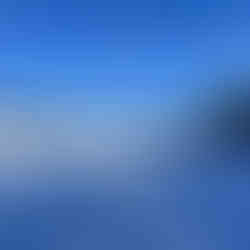Hard Water Hiking
- krystamiller2892
- Feb 9, 2023
- 4 min read
BWCA-Hegman Lake
1 hour North East of Hibbing, lies some of the best preserved land in all of the state. The Boundary Waters Canoe Area (BWCA) is an over 1 million acre wilderness area within the Superior National Forest and known best its clear and remote lakes that are only accessible by a portage carrying your canoe to various lake access point. The conservation of this land has preserved some of the most beautiful, wild land and historical features. The closest town to the BWCA is Ely, MN which is a popular destination in Northern MN. It is known as the gateway to the BWCA; it has everything from a grocery store to a store that produces leather mukluk boots, to a store that hand sews each and every jacket they make to canoe rentals to make the most out of your time enjoying the great outdoors that this area has to offer.

Justin and I chose a particularly cold (high of -12 degrees Fahrenheit) and sunny day to set out for an adventure. We had read about 500-1000 year old pictographs that were accessible via a hike in the winter and we needed to see this for our own eyes. These pictographs are ancient Native American paintings that have existed for hundreds of years; the purpose and meaning of these pictographs are mysterious. The pictographs on South Hegman Lake are some of the most popular and relatively easy to access in the winter.
It was a 1.5 hour drive from Hibbing to get to our destination; the road trip was complete with a Holiday Gas Station snack and coffee pit stop and a good book. Currently, I am reading Wrong Alibi by Christina Dodd which is surprisingly good for a book that drew me in by its cover while wondering the aisles of Barnes and Noble. The sun was warm and comforting as we made our way to the trail head. To access the trailhead we followed the winding dirt road of Echo Trail which was remote and full of evergreen trees which made us even more excited for the hike.
At the trail head we met a gentleman that was waiting for a group of 4 hikers/campers to bring back to town; they had spent the prior night in the BWCA. He warned us of some pesky slush on the lakes . After a short discussion about the mild MN winter weather with the MN nice stranger, we were off. To access these pictographs on South Hegman Lake, there was a short trail through the densely wooded wilderness to the first lake access. The lake access brought us to South Hegman Lake, we hiked across this lake to a small break of land and then accessed North Hegman Lake. While hiking these lakes we were awestruck with how quiet the world around us was and how blue the sky was. We soaked up the warm sun rays on our dark winter jackets and took time to analyze the perfectly shaped snowflakes on the ground. There was a well-traveled path on the lake that we followed. We did notice the signs of slush that had been a nuisance to the hikers the prior day, but with the drop in temperature the pesky slush was sturdy enough for us to walk right over and not have to be concerned about getting wet feet.
After about 1.75 miles, we made it to a large cliff to our left. We were admiring the large icicles that had formed at the tops of these cliffs and did not spot the pictographs immediately. I was the first to spot these paintings and I alerted Justin to this discovery by a gasp; it was truly a sight that took your breath away. We were standing somewhere that hundreds of years ago when the world looked and acted very different an artist had decided to leave their mark on this beautiful land. It makes you wonder if they knew that their artwork would be around for that long and would be a destination for avid canoers and hikers alike.
Justin and I admired this painting for quite some time and then had the discussion about what we thought the painting medium could be made from? Iron ore, mud, soot, animal byproducts? We also discussed if the location and placement of the painting is the reason that this has lasted so long. We had no answers. We also only can wonder the whys of the contents of the painting? Why was there what appears to be a man, a moose and some type of 4 legged critter? What was the meaning? Was there a meaning or were these just some of the painter’s favorite things? The sense of wonder that Justin and I had when we started our trek back to the Rav4 was tangible.
Justin and I were so impressed with finding and appreciating these works of art, that we are determined to make our way to more pictograph sites in the summer with a canoe. What an incredible feeling it is to be wandering around land that has been left “wild” so we can day dream and imagine what this world looked like in a much simpler time.
Wandering aimlessly until next time, Krysta















Comments